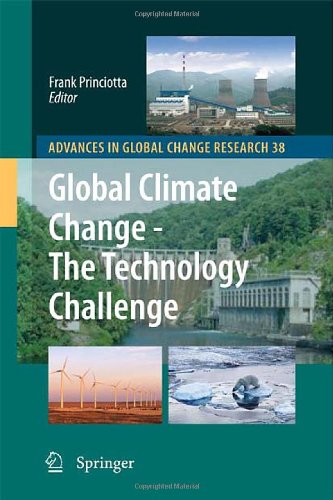

Most ebook files are in PDF format, so you can easily read them using various software such as Foxit Reader or directly on the Google Chrome browser.
Some ebook files are released by publishers in other formats such as .awz, .mobi, .epub, .fb2, etc. You may need to install specific software to read these formats on mobile/PC, such as Calibre.
Please read the tutorial at this link: https://ebookbell.com/faq
We offer FREE conversion to the popular formats you request; however, this may take some time. Therefore, right after payment, please email us, and we will try to provide the service as quickly as possible.
For some exceptional file formats or broken links (if any), please refrain from opening any disputes. Instead, email us first, and we will try to assist within a maximum of 6 hours.
EbookBell Team

5.0
20 reviewsIn order to avoid the potentially catastrophic impacts of global warming, the current 3% CO2 global emission growth rate must be transformed to a 1 to 3% declining rate, as soon as possible. This will require a rapid and radical transformation of the world’s energy production and end use systems. The current generation of energy technologies are not capable of achieving the level of mitigation required. Next generations of renewable, low carbon generation and end use technologies will be needed.
This book quantifies the mitigation challenge. It then considers the status of key technologies needed to protect the planet from serious climate change impact. Current and emerging technologies are characterized for their mitigation potential, status of development and potential environmental impacts. Power generation, mobile sources, industrial and building sectors are evaluated in detail. The importance and unique challenges for rapidly developing countries, such as China and India are discussed. Current global research and development efforts for key technologies are discussed. It is concluded that it will be necessary to substantially upgrade and accelerate the current worldwide RDD&D effort on both emerging energy technologies and those enabling technologies needed to improve mitigation effectiveness and economics. It will also be necessary to carefully evaluate the potential environmental characteristics of next generation technologies to avoid unacceptable health and ecological impacts.
Finally, given the monumental technological challenge associated with transforming the world’s energy system, geoengineering options are evaluated, since if successfully deployed, they have the potential to allow more time for the necessary energy system transformation.
‘This book on Climate Change not only gives a clear picture of the problem but suggests many of the pitfalls in solving it and recommends strongly, a research program to fill the gaps in our knowledge. It is a most useful reference book for all aspects of the problem.’William D. Ruckelshaus, Madrona Venture Group/Evergreen Venture